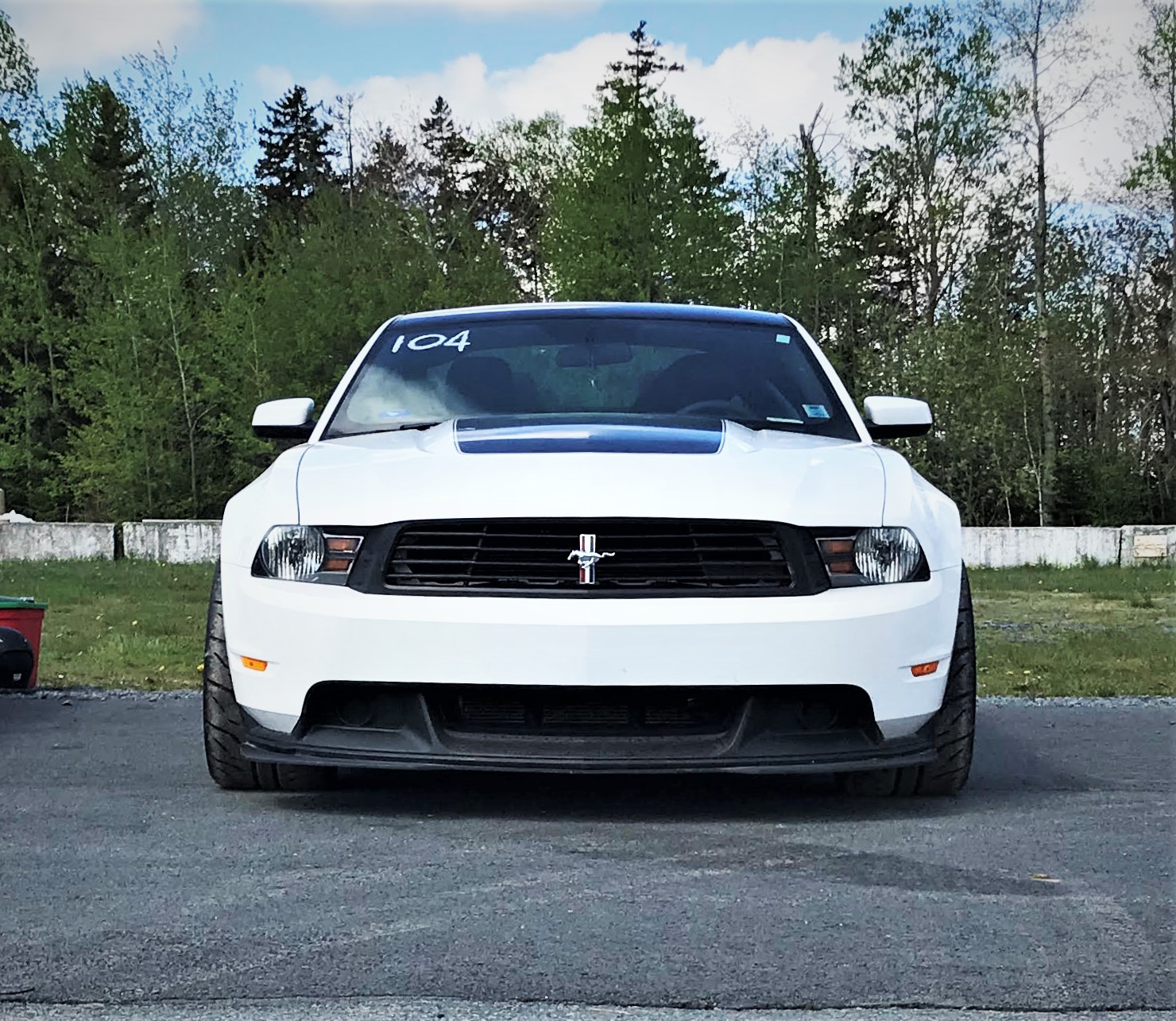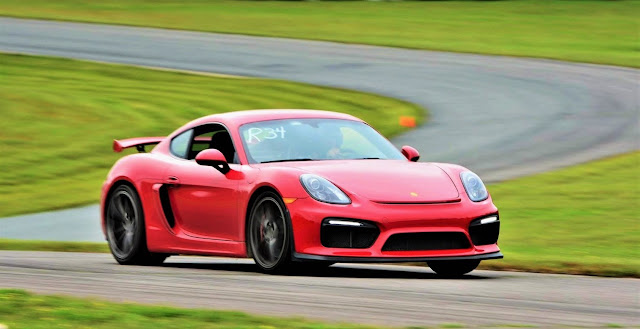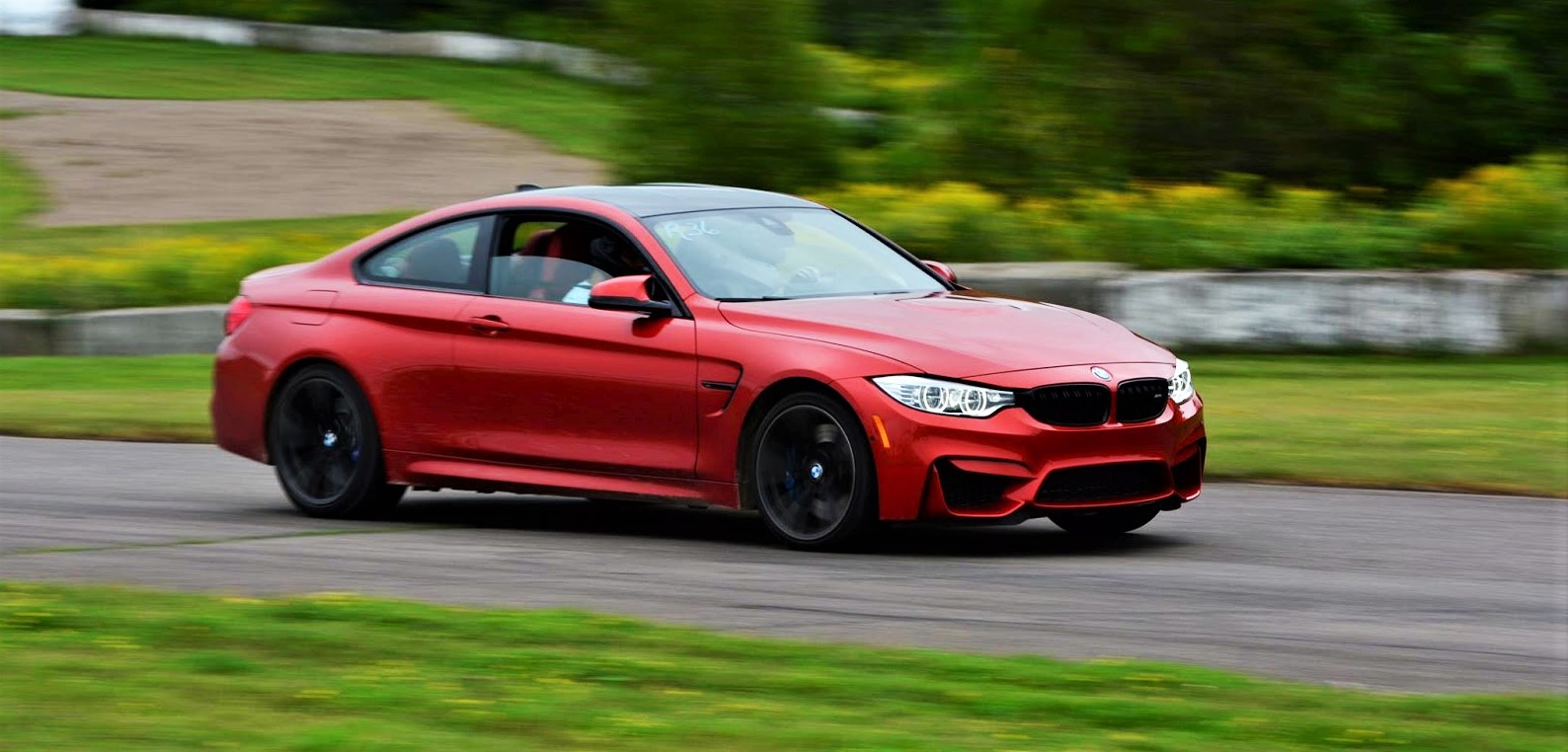Well, this comparison was bound to happen. A 2015 Mustang GT equipped with the Performance Package vs a 2015 Chevrolet Camaro SS equipped with the 1LE package. Before we get to the numbers, let's look at how these performance oriented packages improve on the regular spec models.
The Mustang Performance Package ($2,495 USD/$3,700 CAD) adds the following:
- Chassis stiffening through a Strut-tower Brace and a K-Brace
- A Larger Radiator
- Unique Chassis Tuning
- Upsized Rear Sway Bar
- Heavy-Duty Front Springs
- K-Brace
- Brembo 6-Piston Front Brake Callipers with Larger Rotors (15")
- 19" x 9" front and 19" x 9.5" rear wheels (Gloss Black Aluminum)
- Unique Stability Control, EPAS (Electronic Power Assisted Steering) & ABS Tuning
- 3.73 TORSEN Rear Axle (differential)
The rear wheel size is 0.5" wider than those on the outgoing Mustang with the Track Pack which used 19" x 9" wheels front and rear. It also gets 255/40/19 front and 275/40/19 rear Pirelli P Zero tires as opposed to the outgoing Track Pack which brought 255/40/19 P Zero tires front and rear. The pack also adds non-performance-enhancing features like a Gauge Pack showing oil pressure and vacuum.
- 20" x 10" front & 20" x 11" rear forged aluminum wheels (Black Aluminum)
- Tires: P285/35ZR20 BW Goodyear Eagle F1 Supercar
- 3.91 Axle Ratio with a limited slip diff (LSD) which is a TORSEN unit, according to the video.
- Performance Ride & Handling Suspension (unique shocks, springs, and anti-roll bars plus a strut tower brace)
- Transmission: 6 Speed Manual w/unique gear ratios
- Sueded Microfibre-Wrapped Shift Knob
- Sueded Microfibre-Wrapped Flat-bottom Steering Wheel
- Sport End Rear Spoiler
According to Motor Trend, the package also brings upgraded wheel bearings, toe links, shock mounts and fuel pump from the ZL1.
The results? well, both cars are tied in the runs to 60 mph taking just 4.4 seconds while the Mustang pulls ahead slightly by the 1/4 mile finishing in 12.8 s to the Camaro's 12.9 s run. The Mustang should continue to pull away, though, going past the traps at 112.2 mph while the Camaro manages "only" 110.5 mph. This should mean that, in stock form, the Mustang still has a slight edge in a straight line but this is almost irrelevant because both cars are rarely left stock by those who race them and they respond well to modifications so who is going to win is probably going to come down to modifications, a good tune and a good driver.
Things are reversed on a road course though. At Streets of Willow, the Camaro laid down a lap time of 1:22.7 while the Mustang did a 1:24.32 which represents a 1.62 second advantage to the Camaro. That is significant in a 1-minute-20-second lap.
Many Mustang fans are now probably either angry at Ford or blaming the driver or a host of other factors but there are a couple of things to consider. Ford probably knows the wide demographic of Mustang buyers and it didn't want to scare anyone away with an overly stiff ride. Some people are blaming the fact that the chassis is still new and cars improve with age and while that is very true, I think that Ford wanted the launch model year to be soft and comfortable for the average driver. Let's face it, car enthusiasts are not your average driver and there are more average buyers looking for something fast and sporty than enthusiasts looking for certain balance at the limit and lap times. It would also be easier to convince someone who is disappointed by the numbers to come back to a Mustang by putting a much more aggressive package rather than someone who found the launch model overly stiff to come back by softening the ride.
I'll be the first to admit that my car, a 2012 Boss 302, is underdamped from the factory. You can tell from the body motions. You won't get in the car and mistake it for an old Cadillac. It is stiffly sprung but the body motions aren't as well controlled as they can be, especially given what the chassis is capable of with a good set of dampers. Don't get me wrong, it's an extremely capable package but a food set of dampers go a long way. I have no doubt that with a really good set of dampers, the Performance Pack could really transform the 2015 Mustang GT into something else.
Finally, the wheel and tire package. One thing that is easy to notice is how much wider the wheels on the Camaro are compared to the Mustang. A wider wheels reduces tire squirm and increases stability, something that probably hurt the Mustang and was mentioned in the video. Combine the better footprint of the Camaro with better controlled body motions and you've got a winning combination.
The Mustang still made a great showing, it was simply a little overshadowed by the now aging Camaro. It was still 1.5 seconds faster than the outgoing 2014 Mustang GT with the Track Pack, but it wasn't enough to beat the 1LE. Now while that may seem like a failure considering the age of the current Camaro, I think there is some positive in the outcome. Ford benchmarked the E92 BMW M3 with the Boss 302 and it handily beat it. It took a huge leap in the power wars with the last Shelby GT500, producing 662 hp. The 1LE package is a few years now and it has already beaten the 2014 Mustang GT Track Pack. I think if Ford wanted the new Mustang to beat the Camaro, it would have. Nevertheless, a win is a win and if you want the best pony car to take to the track without modifications and want to worry only about tires, brake pads and fluids, the SS 1LE is the better car. Since it appears that Ford left the job of beating lap times to the upcoming GT350, this one is bound to be a beast. Here's hoping we won't have to wait much longer for the reveal and testing!












Comments
Post a Comment